The content of the article
The Chinese rose has dark green shiny leaves and bright velvet inflorescences that appear on branches in the middle or end of spring. The height of adult indoor bushes is 1.5–2 m. The plant, which is also called hibiscus, is grown in apartments and offices. In some countries, inflorescences are used to make hair dye, and shoots of Chinese roses are used as food. It’s no harder to take care of the indoor bush than to orchid or bamboo.
Lighting
The decorative bush is contraindicated in direct sunlight. On the leaves after contact with ultraviolet light, small yellow spots remain, which gradually increase and spread to the shoots. Burns weaken the immunity of the Chinese rose and make it vulnerable to diseases and spider mites.
Hibiscus does not like shadow. The sun's rays are responsible for the photosynthesis and growth of young shoots. The Chinese rose, devoid of ultraviolet light, weakens and discards the leaves.
A pot with an ornamental plant is placed on the southern or eastern windowsills. Windows are covered with blinds or thin tulle, which softens and scatters the sun's rays. A hibiscus flowerpot can be placed on a special stand next to the windowsill. The Chinese rose will be reliably protected from burns.
In winter, the decorative bush rests, it needs a minimum of light and water. If the owners of the Chinese rose transferred bloom from spring to mid-summer, in December and January the plant will have to be illuminated with table lamps. An electrical appliance is placed at a distance of 30-40 cm from the decorative bush. The lamp is turned on for 4–5 hours to increase the duration of daylight hours.
In summer, a flowerpot with a Chinese rose is taken out to the garden or to the balcony. The pot is buried in the ground under a sprawling tree so that the hibiscus is always in the shade. Fresh air strengthens plant immunity and activates flowering.
Tip: If burns appear on the leaves of a Chinese rose, you need to prepare a solution of white sugar and distilled water. Damaged parts of the flower are rubbed with sweet liquid 2-3 times a day. The product is quickly absorbed and triggers leaf regeneration.
Watering
In summer, hibiscus needs a lot of water. Due to high temperatures, the liquid evaporates from the soil. Dry roots quickly decay, and the plant dies. The Chinese rose is watered with settled or melt water, heated to 30–35 degrees. The substrate is moistened 2-3 times a week. The liquid is introduced when the topsoil dries by 2–4 cm. The soil is loosened before irrigation to saturate it with oxygen and increase the digestibility of moisture.
Hibiscus does not tolerate dry air. Next to the pot is advised to put bowls filled with cool distilled water or pieces of ice. Liquid under the influence of sunlight gradually evaporates, moisturizing and cooling the air on the windowsill.
It is useful to spray a Chinese rose from a spray bottle. Leaves and shoots moisturize in the early morning so that the moisture has time to evaporate. If droplets of water remain on the plant, they will attract ultraviolet light, which will burn the hibiscus.
In the evening, the decorative bush is wiped with a damp cloth, cleaning from dust. Indoor flower absorbs moisture quickly. Instead of ordinary water, you can use a sugar solution. Sweet liquid provides the plant with nutrients.
In summer and winter it is good to bathe hibiscus. The buds and inflorescences are covered with plastic bags so that moisture does not get on them. Petals fade and fall due to water. Cloth and cover the ground.Leaves before bathing can be sprayed with soapy water to prevent spider mites. The flower is substituted under a weak stream of water at room temperature and held for 10-15 minutes. After water procedures, the plant is left in the bath until completely dry. Wet hibiscus protect against drafts and direct sunlight.
Water is poured into the pan in the summer. The container is filled with small pebbles, which are poured with boiling water for disinfection before use. A few tablets of activated carbon or wood ash powder can be added to the liquid. The components disinfect water and protect against the appearance of fungus, so it stays fresh longer. The roots of the Chinese rose absorb the necessary amount of moisture in 2-3 hours. The remains are poured so that they do not stagnate.
In winter, the decorative bush is watered twice a month. When they turn on the heating and the air becomes dry, they begin to spray the hibiscus with the settled water. The liquid protects the plant from spider mites and diseases.
Fertilizer and temperature
Make-up for Chinese rose is introduced during the formation of buds and flowering. Decorative bush is fertilized twice a month. Buy drugs for flowering plants. Suitable "Kemira plus" or a mixture of potassium and phosphorus. In winter, the dose of recharge is reduced by 4 times. The agent is applied to the substrate every 1.5–2 months. From November to March, you can refuse fertilizers so that the Chinese rose rests and prepares for the growing season.
The comfortable temperature for hibiscus is + 25-18 degrees in the summer. In winter, the rate drops to + 15–13. The Chinese rose perishes at subzero temperatures. If the room is cold, you can wrap the pot with plants with cling film or newspapers, push the flowerpot to the heater or battery, but remember to moisten the air from the sprayer.
In winter, you should not raise the temperature above +14 degrees. The cool climate creates ideal conditions for the formation of kidneys. At + 12–15, the Chinese rose is resting and recovering, preparing for vegetation.
Pruning and transplanting
Young decorative bushes, which are less than 5 years old, are replanted annually in new pots. The flowerpot should be 2-3 cm larger than the previous one. In too large containers, the root system grows, the green mass increases, and the buds practically do not form. To have a lot of inflorescences, the Chinese rose is transplanted into a small and cramped pot.
Buy clay or plastic flowerpots with drainage holes and pallets. The containers are filled with a nutritious and light mixture that allows moisture and air to pass through. In flower shops, a substrate intended for hibiscus is selected. At home, mix:
- turf land - 2 parts;
- sand - 1 part;
- peat or humus - 1 part.
Grated foam or small pebbles are added to the substrate. Drainage components make the soil loose.
The land is brought from a garden or vegetable garden; you can pick up soil at the edge of the forest. Sand and soil are calcined. The substrate is disinfected in a double boiler or oven, spilled with boiling water or dark pink manganese solution. High temperatures destroy weed spores and insect eggs.
The processed land is mixed with peat and insisted for several days so that beneficial bacteria appear in the soil. A third of the pot is filled with expanded clay or pebbles. The drainage components are washed in soapy water. A thin layer of substrate with polystyrene is poured over the expanded clay.
Hibiscus before transplantation is not watered for a week, so that the soil in the pot is dry. The wooden handle of the blade or knife is knocking on the walls of the pot. When the earth is separated, the container is turned over. The Chinese rose is held by the stem and gently scrolling the flowerpot, and then removed. They remove the excess substrate from the root system, but do not touch the earthen lump. The base of the ornamental bush is reloaded into a new pot, sprinkled with soil.The substrate is slightly tamped, watered.
The plant is cut before transplantation. The procedure is carried out in the spring until the buds appear. Thanks to pruning, a dense and lush crown is formed with a large number of inflorescences. Choose the longest shoots and shorten by 2/3.
Excess parts are removed with a sharp knife or secateurs. Ordinary scissors will do. The tool is wiped with alcohol before use. The blade is treated after each remote shoot to prevent infection and decay of the Chinese rose. The place of cut is lubricated with garden varnish so that juice does not leak. You can sprinkle with crushed activated carbon or wood ash. The components disinfect open wounds and destroy bacteria, accelerating healing.
Pruning can be done in March so that a Chinese rose blooms in spring. If you need to delay the formation of buds, the removal of healthy shoots is postponed until May. Cut not only green, but also dry branches, on which there are no leaves. The diseased parts of the ornamental bush are also removed to stop infection.
With an artificial delay in flowering, hibiscus is transplanted at the end of May. Watering is reduced. They make sure that the earth does not dry out, but make a small amount of water. In the middle of summer, pruning is repeated. Fertilizers begin to be applied in June or July.
Breeding
Healthy cuttings remaining after pruning are not thrown away. Select specimens with leaves and 2-3 knots. The blanks are planted in plastic cups filled with a substrate for a Chinese rose. Seedlings are watered and covered with glass jars to create a moist and warm microclimate inside the container.
The plant is put in a warm place for a month. Hibiscus will need 20-30 days to take root. Seedlings are periodically watered so that the earth does not dry out and aerate. Banks are cleaned for 10-20 minutes, and then returned. The grown seedlings are transferred to clay or plastic pots, watered and fertilized. Young shoots can be fed with syrup. In a glass of water take 1-2 tbsp. l white sugar and stir until crystals are completely dissolved. 200-250 ml of sweet fertilizer is poured into each pot.
Hibiscus is propagated not only by cuttings, but also by seeds. Planting material is formed in buds after shedding petals. Seeds are first soaked in a solution that stimulates growth, and after 24 hours they are washed with water and pale pink potassium permanganate. The blank is wrapped in a wet cloth and placed in a plastic bag. Planting material is kept near the battery or heater until sprouts appear.
Hatching seeds are planted in a box with a substrate for hibiscus and covered with glass. The transparent cover is removed when 2-3 full leaves are formed on the seedlings. The grown Chinese roses dive and transplant into separate pots.
Causes of Yellow Leaves
Hibiscus does not tolerate tap water. Impurities of chlorine and calcium are deposited in the soil and affect the root system. The lower leaves of the Chinese rose fall off, and the new ones take on a yellowish tint. Iron supplements will help cure the plant. If water is not upheld and replenishment is not used, the Chinese rose will cease to bloom, and the leaves will completely fall, and the branches will become bare.
Yellow streaks appear with a lack of nitrogen and potassium. Stains of a golden or pale green hue arise with an excess of fertilizers. Water make no more than 2 times a month, and in winter they forget about the existence of fertilizers and allow the hibiscus to relax.
During flowering, the leaves turn yellow due to the large number of buds. A decorative bush spends all resources on the formation and development of inflorescences. In such cases, the plant is watered with sweet water and fertilized 3-4 times a month to provide the Chinese rose with nutrients. You can carefully cut or pluck new buds.
Leaves turn yellow due to lack of light.A pot that is constantly in the shade is moved closer to the window and sunbathed. It is worth protecting hibiscus from drafts. They reduce immunity and lead to leaf fall.
Chinese rose does not bloom
A decorative bush throws inflorescences annually. Buds are formed in spring or summer. If hibiscus does not bloom, you need to carefully look at it.
Inflorescences may be absent due to a sharp change in temperature. The kidneys are laid in a cool room. If you sharply transfer hibiscus from the room where it was + 12-14, into heat or put next to the battery, the plant will lose future buds and leaves.
The Chinese rose does not bloom due to lack of light or fertilizer, irregular watering. Nitrogen supplementation must not be abused. They stimulate the growth of green mass and stop the formation of inflorescences. Hibiscus fed with nitrogen will have a thick and lush crown without a single bud.
Inflorescences fall due to drafts and dry air. The leaves of a Chinese rose should be sprayed in winter and summer and wiped with a damp cloth, but the buds should not be touched. They do not recommend often turning the decorative bush or moving it from one window sill to another.
In the absence of buds, the topsoil should be replaced. It is carefully removed with a spatula, trying not to damage the roots. New soil is mixed with rotted compost and dried algae. Supplements provide hibiscus with the nutrients needed for flowering.
Diseases and Pests
A sharp change in temperature and drafts lead to the appearance of a fungal infection. In an infected plant, the leaves dry and become covered with black spots. Watering for the duration of treatment is reduced or stopped. It is important that the soil remains slightly moist, but no liquid accumulates in the pan. The roots affected by the fungus are cleaned of soil and soaked for several hours in a weak solution of manganese. Blackened shoots and leaves are cut, wounds sprinkled with activated charcoal and dried.
For fungal diseases caused by a lack of nutrients, the crown of a Chinese rose is sprayed with liquid fertilizers and fungicides.
The Chinese rose is attacked by a spider mite. Insects settle on the lower sheets. The first symptom is yellow dots and a thin web that entangles the stem. Pests are destroyed with a solution of Fundazole. 2 g of suspension are poured into 1 liter of water and a decorative bush is sprayed. Processing is repeated several times, a break of 1 week.
At the initial stage of infection, insecticides can be dispensed with. A spider mite is destroyed with a soapy solution. The tool wipe the leaves and branches several times a week.
Hibiscus living on the street can attack aphids. Small bugs are hard to notice. Yellowing leaves and a sweetish bloom indicate infection with insects. A Chinese rose is sprayed with Nicotine Sulfate. 1 g of substance is taken per 1 liter of water. Several treatments are carried out so that the aphids disappear completely.
Even novices who previously did not have indoor flowers will be able to take care of the Chinese rose. Hibiscus is afraid of temperature extremes, direct sunlight, cold water and drafts. Likes diffused ultraviolet, heat and organic recharge. If you regularly water, fertilize and trim the plant, it will delight you with a lush crown and bright flowers.
Video: proper care for hibiscus (Chinese rose)

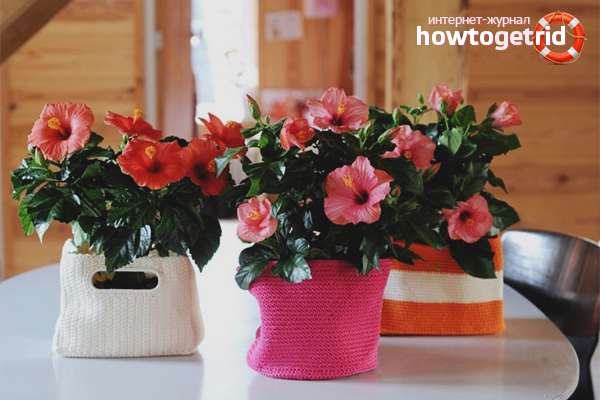
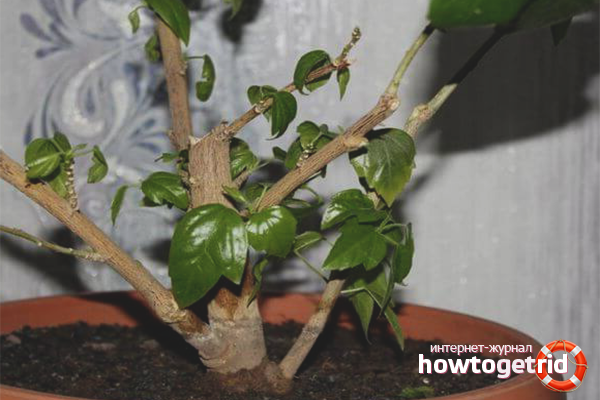
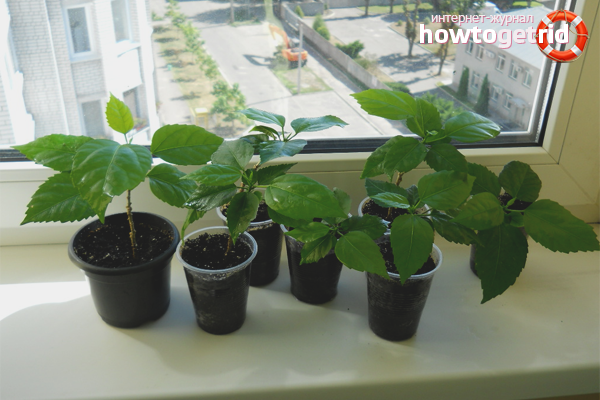



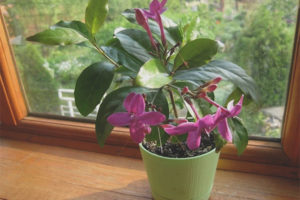



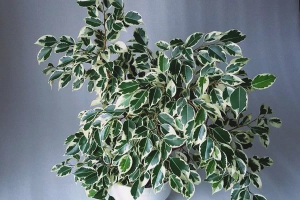

Submit